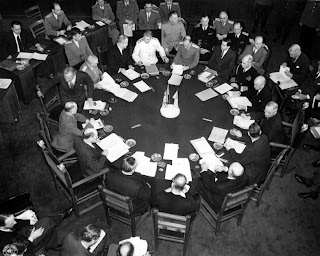Introduction
...Since the late eighties, Charalambidis’ large scale installations -incorporating dismantled structural elements from his home- have been developed as, politically charged, platforms of interdisciplinary cooperation that activate buffer zones and contested areas. Ahead of the artistic tendencies of that time, his multilayered interventions in Cyprus’ Green Line, risking in some occasions literally his life, have been a benchmark that provide over the years, an exemplary model for art events and actions in war zones and contested areas in Lebanon, Ireland and the Gaza strip.
One of the most known “platforms of sympraxis” the Rambling & Rumbling Museum, was founded in 1997, drawing strongly on his experiences as a child, when he and his family were forced to leave their home in the north of Cyprus by the invasion of the Turkish army. Thus, reflecting the connections between the notions of home and homeland, Rambling & Rumbling Museum’s starting point is the artist’s house in Athens, while its expanding activities take place at the Hollow Airport Museum in Cyprus...
Extract from a text by Dr. Aspasia Mastrogianni
Hollow
Airport
Museum
H A M
Hollow Airport Museum (H.A.M), takes the form of an emblematic Art School, potentially housed at the abandoned International Airport of Nicosia within the UN-controlled Green Line in Cyprus. The currently derelict building not only used to be the main airport of Cyprus since 1968, but also of the entire region. Its innovating modern construction, designed by the German company Dorch-Gehrmann of Wiesbaden, has been an international prototype for airport architecture. Activating its former principal role, H.A.M., aims to stand as an educational, intellectual centre, a meeting point that brings together cultures from the countries of the Eastern Mediterranean, such as Syria, Israel, Palestine, Egypt or Lebanon. This geopolitically tense area, suffering from ongoing conflicts and wars, finds under the name of Ham – son of Noah and forbearer of these nations – a stimulating intellectual refuge, a cultural meeting point and a Museion.
Arab Guggenheim Museum
The Ancient Greek Mouseion was more than just a library, a storehouse of texts, manuscripts and books, or a space where artworks could be accumulated and exhibited. It was a home for music and poetry, a kind of an interdisciplinary laboratory, as well as a philosophical school, where scholars and scientists, researchers, poets and musicians were connoting a community under the protection of the Muses. Reflecting such a Greek model, H.A.M. accentuates the workshop style of an alternative Fine Art School that invites a great array of scientists, intellectuals and international artists – whose oeuvre is highly political – to carry out specific working programmes and assignments. Basically, the artists are invited to use the spaces of the former airport for a predetermined time, as studios in order to accomplish one of their projects under the assistance of the Arab Guggenheim Museum, a group of art students and local artists, who consist the working staff of the school, enriching through that procedure their ideas and experiences. The name Arab Guggenheim Museum of this ongoing artists’ collective, is often used generally for the entire project, overlapping as a kind of nick name the official name of the Hollow Airport Museum. As Nicos Charalambidis claims, the school’s strategy of appearing under a variety of names and pseudo names depending the program or the country that hosts occasionally its activities, emphasizes the notions of identity and transnationalism, displacement nomadism and migration.
Participant ArtistsArtists such as Nedko Solakov, Mounir Fatmi, Gülsün Karamustafa, William Kentridge, Narda Alvarado Santiago Sierra, Kai Schiemenz, Pravdoliub Ivanov, Ziad Antar, Wafa Hourani, are only some of the personalities who have already collaborated in a wide range of HAM’s activities, exhibitions and projects. In 2008, during H.A.M.’s exhibition at the Centre Georges Pompidou (link), the president Alain Sebain, had inaugurated the portable porch of the school, which is a replica of the Ledra barricade that used to separate the island in two. In 2009, the Hollow Airport Museum celebrated the 20 year anniversary since the Fall of the Berlin Wall, through an extended exhibition in Athens where outstanding international artists had participated (more info at link 1 and link 2
Venues of Activities
Since 1997, the Hollow Airport Museum’s activities have been presented at numerous Museums, Art Centers, international exhibitions and biennials, such as the 27th Biennial of São Paulo, Brazil, the Centre Georges Pompidou and Palais de Tokyo, Paris, the Turner Contemporary, London, the Quarter Centro Produzione Arte, Florence, the Channel 0, Netherlands Media Art Institute, Montevideo, Amsterdam, the 51st Biennial Venice, Palazzo Querini Stampalia, Venice, the Tirana Biennial, Albania, Galerie im Marstall, Berlin, Germany, the Kunsthallen Brandts Klaedefabrik, Odense, Denmark , the Deste Foundation, Athens, the Gallery La Circuit, Lausanne, Switzerland.
![]()
CARNIVAL PAUSE
At the end of the activities, the outcomes of the “art-school” could be put on display before the artists/teachers’ departure, following the form of a carnival parade into the town. Emphasizing the nomadic character of the Museion, the exhibits could be set up on floats and “meet” people in public spaces, streets and plazas, instead of waiting them to visit the museum. Of course, Carnival is a ceremony that doesn't exist in Arabic civilization, even though it is so familiar to a variety of religions and cultures in the rest of the world. Thus, trying to impose an overseas ritual to them, it sounds like a colonialist strategy. In fact, the Museion’s Carnival parade has nothing to do with the usual procession; actually the real reference here, is nothing else but the very oriental custom of displaying merchandises in the street; costermongers, hawkers and peddlers are very characteristic figures in the Arab world…
Extract from correspondence with Catherine David












